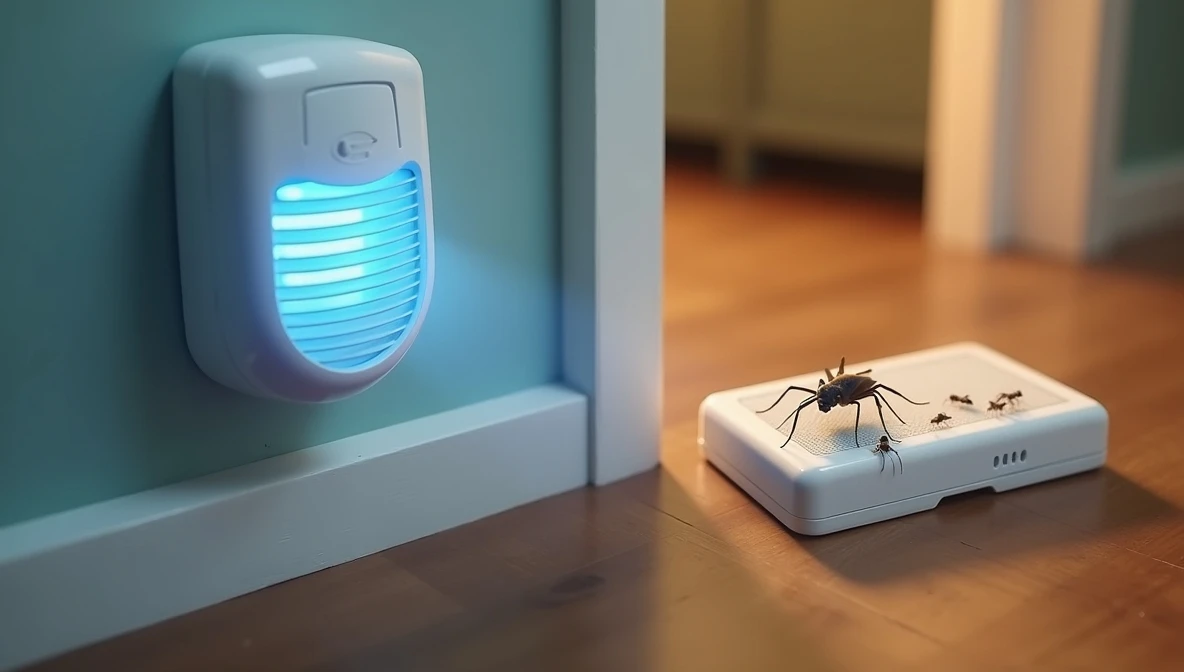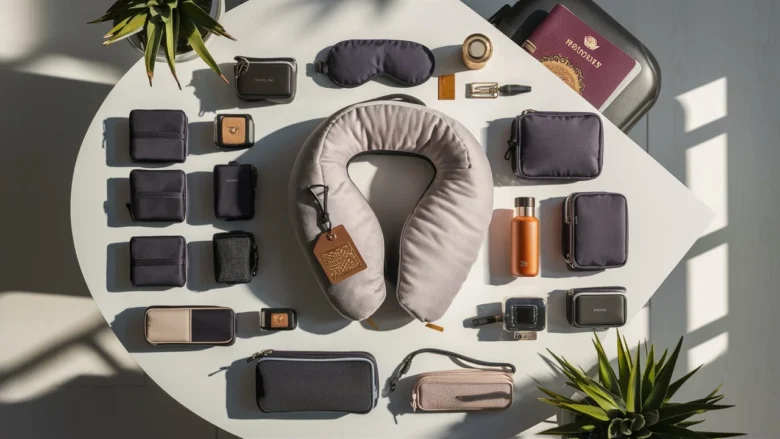Waking up to roaches scurrying across your kitchen counter or hearing mice scratching behind walls triggers immediate disgust and concern. Homeowners dealing with persistent pests often face a critical decision: invest in high-tech electric pest repellers or rely on traditional sticky traps? The choice impacts not just effectiveness, but also safety for children and pets, long-term costs, and daily convenience.
- Comparison Table: Electric Pest Repeller vs Sticky Traps
- Electric Pest Repeller
- 💖 You Might Also Like
- Sticky Pest Traps
- Electric Pest Repeller vs Sticky Traps – Detailed Comparison
- Effectiveness
- Ease of Use
- Coverage Area
- Cost & Maintenance
- Safety (Kids + Pets)
- Best Use Cases
- When They Fail
- Which Works Better for Your Home?
- ✨ More Stories for You
- Best Electric Pest Repellers
- Ultrasonic Plug-In Pest Repeller
- Multi-Frequency Pest Repeller
- Pet-Safe Repeller for Kitchens
- Best Sticky Traps
- Glue-Based Roach Traps
- Hanging Fly Sticky Strips
- Non-Toxic Indoor Sticky Traps
- How to Choose Between Electric Pest Repeller and Sticky Traps
- 🌟 Don't Miss These Posts
- Frequently Asked Questions (FAQs)
- Do electric pest repellers really work?
- Are sticky traps safe around pets?
- Can ultrasonic repellers remove mice?
- How long do sticky traps last?
- Are ultrasonic repellents safe for babies?
- Can I use both together?
- What pests do sticky traps work best on?
- How many electric repellers do I need per room?
- Conclusion
Electric pest repellers promise invisible, chemical-free protection using ultrasonic frequencies, while sticky traps offer straightforward, visible proof of catching pests. Understanding which method suits your specific situation – whether you’re battling flying insects, crawling roaches, or nocturnal rodents – can save money and frustration. Hygiene concerns escalate when pests contaminate food prep areas, making the right choice even more critical.
Before choosing, explore top-rated electric pest repellers on Amazon and sticky insect traps to compare options suited to your pest problem.
Comparison Table: Electric Pest Repeller vs Sticky Traps
| Feature | Electric Pest Repeller | Sticky Trap |
|---|---|---|
| Working Method | Emits ultrasonic/electromagnetic waves | Adhesive surface captures pests physically |
| Effectiveness | Moderate (varies by pest type) | High for crawling/flying insects |
| Safety | Pet-safe, child-safe, no chemicals | Non-toxic but can trap pets/hair |
| Coverage Area | 800–1,200 sq ft per unit | 10–50 sq ft per trap |
| Price Range | $15–$40 per device | $5–$15 for multi-packs |
| Best Pest Types | Mice, ants, roaches, spiders | Flies, roaches, spiders, moths |
| Pros | Chemical-free, continuous protection | Immediate results, visible confirmation |
| Cons | Results take 2–4 weeks, not universal | Requires disposal, limited range |
| Best For | Whole-home prevention, families with pets | Targeted kitchen areas, quick fixes |
Electric Pest Repeller

Electric pest repellers are plug-in devices that emit ultrasonic frequencies (typically 25,000–65,000 Hz) and electromagnetic pulses to disrupt pest nervous systems, making environments uncomfortable for rodents and insects. These devices cover 800–1,600 square feet depending on the model, ideal for deterring mice, roaches, ants, and spiders without chemicals or traps.
Safety is a major advantage—ultrasonic frequencies remain inaudible to humans and most pets (though some users report dogs/cats reacting initially). However, scientific studies show mixed results: while some research indicates temporary pest displacement, effectiveness varies significantly based on room layout, wall materials, and pest species. Roaches and ants may show reduced activity, but complete elimination rarely occurs with repellers alone.
The biggest pain point? Patience. Results typically appear after 2–4 weeks of continuous use as pests gradually relocate. Expect initial increases in pest visibility as they flee disrupted nesting areas.
✔ Browse Best Ultrasonic Pest Repellers to explore high-frequency devices suited for your home size.
💖 You Might Also Like
Sticky Pest Traps

Sticky pest traps use strong adhesive surfaces coated with attractants to physically capture crawling and flying insects on contact. These glue boards work instantly—no waiting period required – making them perfect for kitchens, pantries, bathrooms, and corners where pests travel at night.
They excel at catching roaches, spiders, flies, moths, silverfish, and even small mice. The low-maintenance design requires only periodic replacement (every 2–4 weeks depending on pest activity). Many modern traps feature folded designs that hide captured pests from view, addressing aesthetic concerns.
Drawbacks include limited coverage (each trap protects only 10–50 square feet) and disposal challenges—removing traps with live or dead pests can be unpleasant. Additionally, traps occasionally catch pet fur or curious pets, though pet-safe enclosed designs minimize this risk. For severe infestations, you’ll need multiple traps strategically placed along baseboards, under sinks, and near entry points.
✔ See Best Sticky Traps for Home to find discreet, high-capture glue boards.
Electric Pest Repeller vs Sticky Traps – Detailed Comparison
Effectiveness
Electric pest repellers show moderate effectiveness primarily for rodent deterrence, with success rates varying by species and environment. Ultrasonic devices may reduce pest activity by 30–50% over several weeks but rarely eliminate infestations completely. Sticky traps deliver immediate, visible results with 80–95% capture rates for targeted insects like roaches and flies but don’t prevent new pests from entering.
Ease of Use
Repellers require zero maintenance beyond plugging into outlets—just set and forget. Sticky traps demand regular monitoring and replacement every 2–4 weeks, plus strategic placement along pest pathways. For busy homeowners, repellers offer convenience; for those wanting confirmation of pest reduction, sticky traps provide tangible proof.
Coverage Area
A single electric repeller covers 800–1,600 square feet depending on obstructions and wall materials. Sticky traps protect only 10–50 square feet per unit, requiring 6–12 traps for a typical kitchen or basement. Large homes need multiple repellers or dozens of traps for comprehensive protection.
Cost & Maintenance
Electric repellers cost $15–$40 upfront with minimal ongoing expenses (electricity usage averages $0.50–$1 monthly). Sticky traps run $5–$15 for packs of 10–20, with monthly replacement costs of $10–$20 for moderate infestations. Over one year, repellers prove more economical for whole-home prevention, while traps suit short-term or localized pest issues.
Safety (Kids + Pets)
Ultrasonic repellers pose zero toxicity risks and remain safe around children, cats, dogs, and other pets—though some sensitive animals may initially hear frequencies. Sticky traps use non-toxic adhesives but can accidentally trap pet paws or tails. Enclosed trap designs mitigate this concern for pet-friendly households.
Best Use Cases
Electric repellers shine in whole-home prevention scenarios: basements prone to mice, living rooms with ant trails, or bedrooms near wooded areas. Sticky traps excel in targeted applications: behind kitchen appliances, pantry corners, bathroom baseboards, or garage entry points where pests concentrate.
When They Fail
Repellers fail when pests adapt to frequencies (typically after 4–6 months), when walls block ultrasonic waves, or during severe infestations requiring immediate removal. Sticky traps become ineffective once fully covered with pests or dust, in high-humidity areas where adhesive weakens, or against jumping insects like fleas.
✔ Top Pest Removal Tools combine both technologies for comprehensive protection.
Which Works Better for Your Home?
For whole-room prevention and continuous deterrence, electric pest repellers deliver chemical-free, low-maintenance protection ideal for families with pets and children. For immediate, visible pest capture in kitchens and high-traffic areas, sticky traps provide reliable confirmation of effectiveness. The absolute best results come from combining both methods: repellers handle prevention and displacement while sticky traps capture fleeing or remaining pests. Consider safety priorities, budget, and infestation severity when choosing your approach.
✨ More Stories for You
Best Electric Pest Repellers

Ultrasonic Plug-In Pest Repeller
Standard plug-in units deliver 25,000–50,000 Hz frequencies covering 1,000–1,600 square feet per device. Ideal for living rooms, bedrooms, and basements, these budget-friendly options ($15–$25) provide continuous 24/7 protection without refills or batteries. Addresses the pain point of chemical exposure for households with respiratory sensitivities.
Multi-Frequency Pest Repeller
Advanced models alternate between ultrasonic and electromagnetic frequencies (25,000–65,000 Hz) to prevent pest adaptation. These $25–$40 devices feature adjustable settings for targeting specific pests—mice, roaches, ants, or spiders. Perfect for homeowners experiencing repeat infestations where pests have adapted to single-frequency devices.
✔ Find Multi-Frequency Repellers
Pet-Safe Repeller for Kitchens
Compact, low-profile units designed specifically for food preparation areas emit higher frequencies (40,000+ Hz) inaudible to cats and dogs. These $20–$30 devices target roaches, ants, and pantry moths while maintaining safe operation near pet food bowls and water dishes. Solves the concern of using chemical sprays near food storage.
✔ Browse Pet-Safe Pest Repellers
Best Sticky Traps

Glue-Based Roach Traps
Heavy-duty adhesive boards with pre-baited attractants capture roaches, waterbugs, and silverfish in kitchens, bathrooms, and basements. Foldable designs hide captured pests from view while protecting adhesive from dust. Perfect for homeowners needing immediate confirmation of roach activity behind appliances and under sinks.
Hanging Fly Sticky Strips
Vertical ribbon-style traps capture flies, gnats, and fruit flies in garages, porches, and commercial kitchens. These economical options ($5–$10 for 10-packs) excel during summer months when flying insects peak. Addresses the frustration of flying pests near outdoor entrances and garbage areas.
Non-Toxic Indoor Sticky Traps
Child-safe, pesticide-free glue boards designed for visible placement in living areas, nurseries, and pet-friendly homes. Low-profile designs blend with floors and baseboards while capturing spiders, ants, and occasional invaders. Ideal for eco-conscious households avoiding chemical treatments.
✔ Browse Non-Toxic Sticky Traps
How to Choose Between Electric Pest Repeller and Sticky Traps

- Identify Your Pest Type – Determine whether you’re dealing with rodents (mice, rats), crawling insects (roaches, ants, spiders), or flying pests (flies, moths). Repellers work better for rodents; sticky traps excel with insects.
- Assess Infestation Severity – Light preventive needs favor repellers, while active infestations with visible pests require sticky traps for immediate capture. Severe problems demand combining both methods plus professional treatment.
- Measure Your Coverage Area – Calculate square footage needing protection. Rooms over 1,000 sq ft benefit from multiple repellers or strategic trap placement every 10–15 feet along baseboards and corners.
- Evaluate Safety Requirements – Households with curious pets or crawling babies should prioritize enclosed sticky traps or wall-mounted repellers. Avoid open glue boards in high-traffic pet areas.
- Determine Your Budget – Upfront costs favor sticky traps ($5–$15), but annual expenses shift toward repellers ($15–$40 one-time plus minimal electricity). Calculate 12-month costs including trap replacements versus device longevity.
- Combine Options for Best Results – Deploy repellers in living areas, bedrooms, and basements for continuous prevention, while placing sticky traps in kitchens, bathrooms, and entry points for targeted capture. This layered approach maximizes effectiveness across different pest behaviors.
✔ Explore Complete Pest Control Solutions for both prevention and elimination tools.
🌟 Don't Miss These Posts
Frequently Asked Questions (FAQs)
Do electric pest repellers really work?
Electric pest repellers show moderate effectiveness for rodent deterrence and may reduce insect activity by 30–50% over 2–4 weeks. Results vary significantly based on pest species, room layout, and wall materials blocking ultrasonic waves. They work best as prevention tools rather than elimination methods for established infestations.
Are sticky traps safe around pets?
Sticky traps use non-toxic adhesives safe for households with pets, but open designs can accidentally trap curious cats or dogs. Choose enclosed or covered trap styles specifically labeled “pet-safe” to prevent paw or fur contact. Position traps in areas pets cannot access for maximum safety.
Can ultrasonic repellers remove mice?
Ultrasonic repellers may deter mice temporarily by creating uncomfortable sound environments, but complete removal requires combining repellers with traps, sealing entry points, and removing food sources. Mice often adapt to ultrasonic frequencies within 4–6 weeks, reducing long-term effectiveness without additional control methods.
How long do sticky traps last?
Sticky traps remain effective for 2–4 weeks depending on dust accumulation, humidity levels, and pest capture volume. Replace traps when adhesive surface is 75% covered with pests or debris, or monthly in high-activity areas. Traps in clean, low-humidity environments last up to 6 weeks.
Are ultrasonic repellents safe for babies?
Ultrasonic pest repellers operate at frequencies (25,000–65,000 Hz) far above human hearing range, making them completely safe for babies, children, and adults. No chemical emissions, sprays, or toxins are involved. Devices pose zero respiratory or skin contact risks in nurseries and children’s rooms.
Can I use both together?
Combining electric pest repellers with sticky traps delivers superior results-repellers handle whole-room prevention and pest displacement while sticky traps capture fleeing or remaining insects. This dual approach addresses both deterrence and elimination, particularly effective during initial infestation treatment when pest activity increases temporarily.
What pests do sticky traps work best on?
Sticky traps excel at capturing crawling insects like roaches, spiders, silverfish, and ants, plus flying pests including flies, moths, and gnats. They work moderately well on small mice but prove ineffective against jumping insects like fleas or fast-moving pests like centipedes.
How many electric repellers do I need per room?
Use one electric repeller per 800–1,200 square feet, adjusting for walls and obstructions that block ultrasonic waves. Typical bedrooms need one unit, while open-plan living areas or basements may require two devices for complete coverage. Place units 3–4 feet above floor level for optimal distribution.
Conclusion
Electric pest repellers and sticky traps serve fundamentally different purposes in home pest management—repellers provide invisible, whole-room prevention while traps deliver immediate, visible capture. Neither solution alone guarantees complete pest elimination, especially during severe infestations. The most effective strategy combines both technologies: deploy repellers throughout living spaces for continuous deterrence and position sticky traps in high-activity zones like kitchens and bathrooms for targeted capture.
Your choice ultimately depends on pest type, household safety requirements, and patience level. Repellers demand 2–4 weeks for results but offer chemical-free, low-maintenance protection. Sticky traps work instantly but require regular monitoring and replacement. For comprehensive control addressing both prevention and elimination, implementing both methods delivers superior long-term outcomes.
✔ Best Electric Pest Repellers – Browse ultrasonic devices for whole-home protection
✔ Best Sticky Bug Traps – Find high-capture glue boards for immediate results



























